Unit 1
Methods of translating
Original Text:
“Listen to a heartbeat.”
from Grapefruit: A Book of Instruction and Drawings
by Yoko Ono
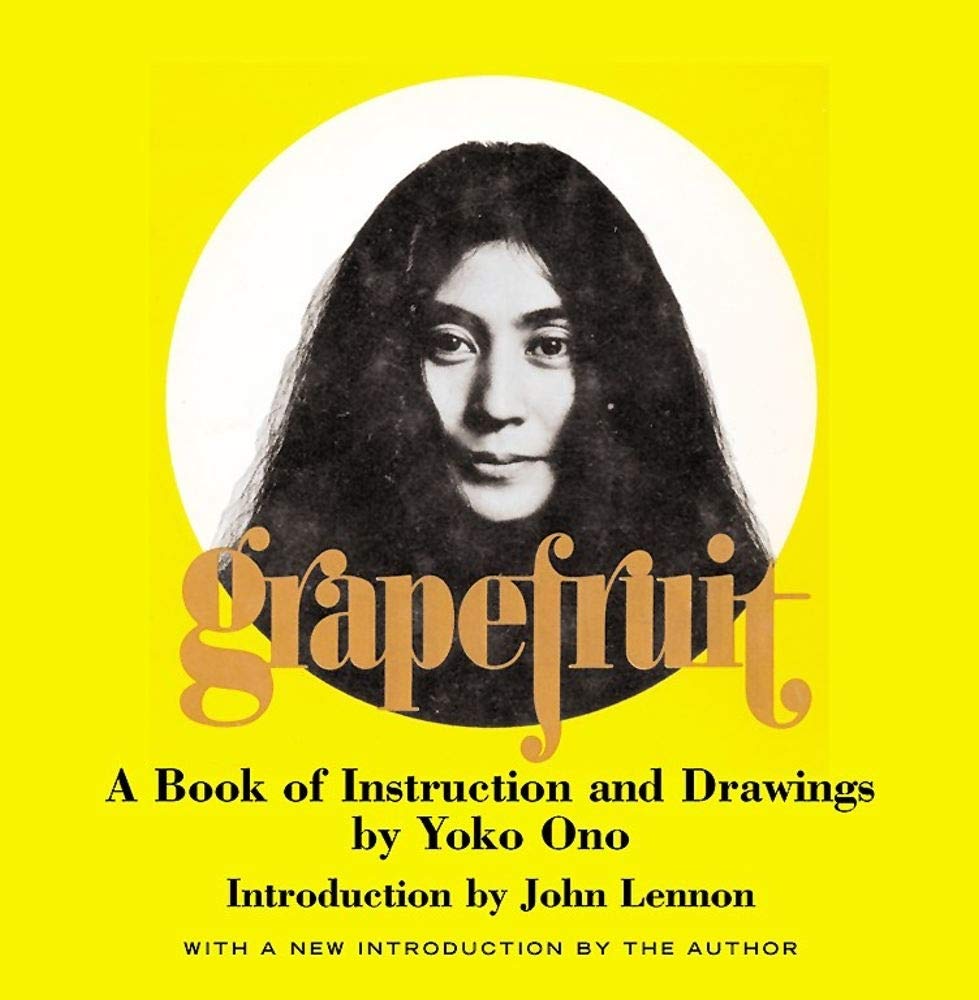
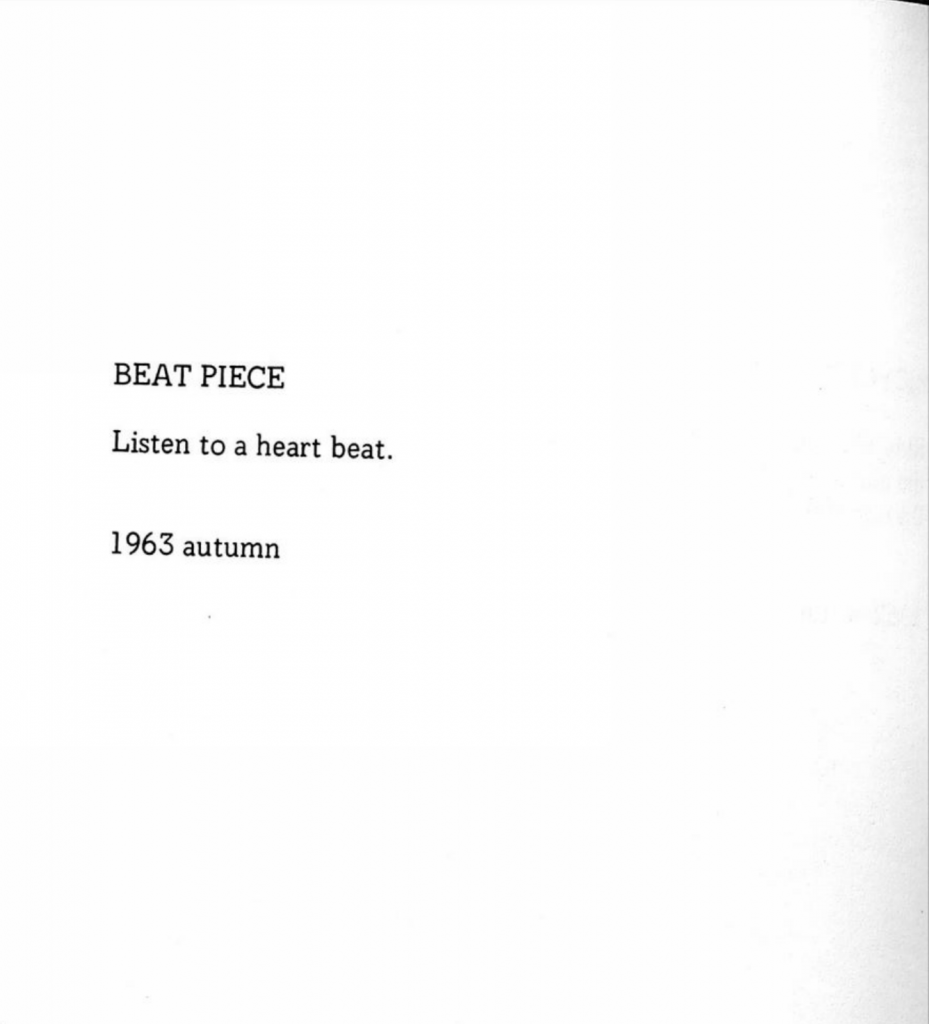
Week 01
1. Time my 50 heartbeats.


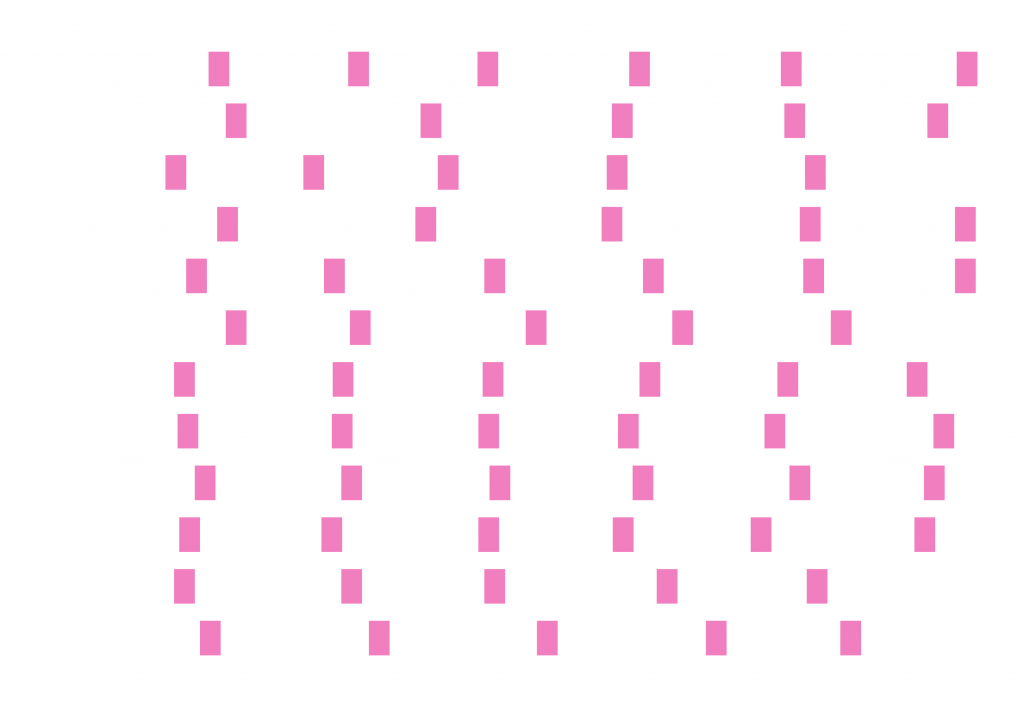


Its original medium is text. In the first experiment, l wanted to continue using text as a medium. To listen to my heartbeat, l put my fingers on my neck and timed 50 heartbeats. According to the time intervals between each heartbeat, l drew squares of different lengths, just like words. Each space represents a heartbeat. According to the text boxes l drew, l created a brand new text about ‘Listen to a Heartbeat.’ All the words are related to this sentence, and then l placed them in this paragraph according to the length of the words. It looks like a real text, but it is actually unreadable. After being translated, it becomes a fake poem that can be shared, rather than a private voice.
2. Extend time.
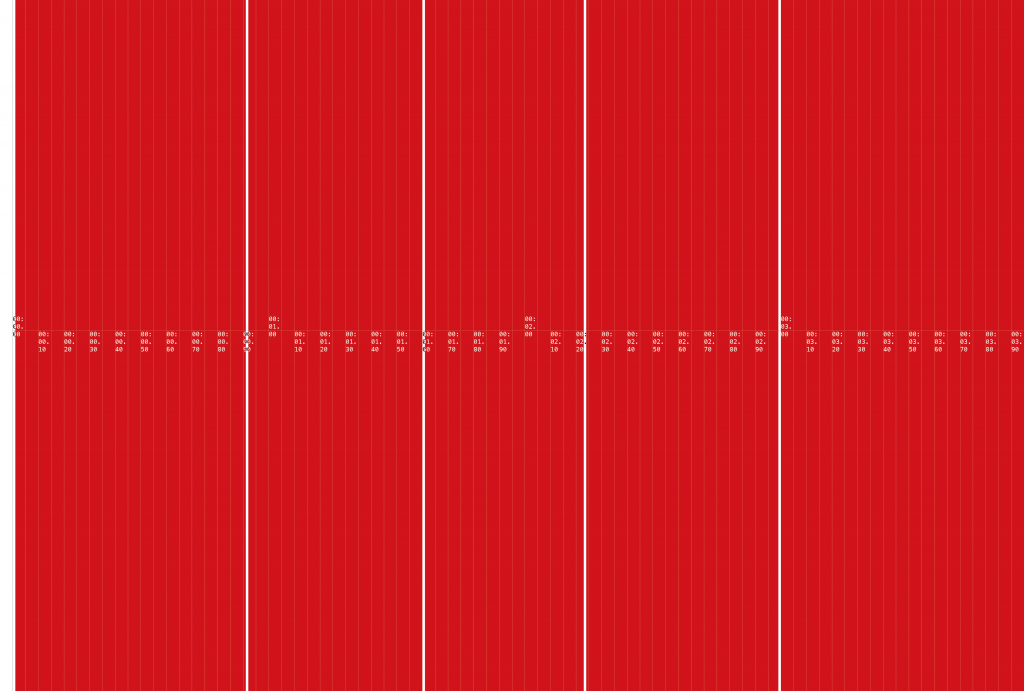
In the second experiment, l also used my timing of the heartbeat. The heartbeat itself is fast, but in this experiment l tried to slow it down by placing it on the medium of a publication. l use milliseconds as the display unit. Compared with the medical electrocardiogram, the heartbeat interval here appears to be extremely long on each page. So l think l clearly slowed down and quantified the heartbeat in a way that extended the original duration through the medium of the book. At the same time, a topic came up, that is, in the current fast-paced life, we should perhaps pay more careful attention to ourselves, especially health issues.
3. Listen to a heart ‘beat’.
Back to the text itself, l found that this text belongs to the beat piece. We are “listening” to the heartbeat, but we have no way of seeing the heart. So it seems that any audible beat with a frequency similar to the heartbeat frequency can be considered a heartbeat. So l collected some video clips with beat sounds and put them together. After expanding the scope, this may be the heartbeat heard. Also, the heartbeat itself is very faint, but in this experiment its sound was made louder.
week 02
Last week, l found that l was focusing on the wrong thing. My experiments were always talking about the heartbeat, rather than the sentence itself. However, some experiments can still be used. My attempt this week is based on the second experiment.
When l went back to the text itself to think about it, l found something similar. ‘Listening to a heartbeat’ is a very short sentence. If you just glance at it, you can read it quickly, maybe not even 50 milliseconds. But if it is expressed in other ways, its reading time will be extended.
So this week l retell the text using three common ways of saying the sentence: speaking, typing and writing. All those three ways extend the length of the sentence.
1) Speak – 00:01.44
2) Type – 00:04.52
3) Write – 00:10.97
Then I put them together in a publication, editing them into a small book about the sentence in milliseconds. The small publication has 180 pages, much longer than the text itself. lt contains three sections according to the way the sentence is retold. At the bottom of the layout, we can see the time it takes to read each syllable – or type or write each letter – and the time gap between each syllable or letter is also reflected in it.
E-book web: 00:01.44 = 00:04.52 = 00:10.97

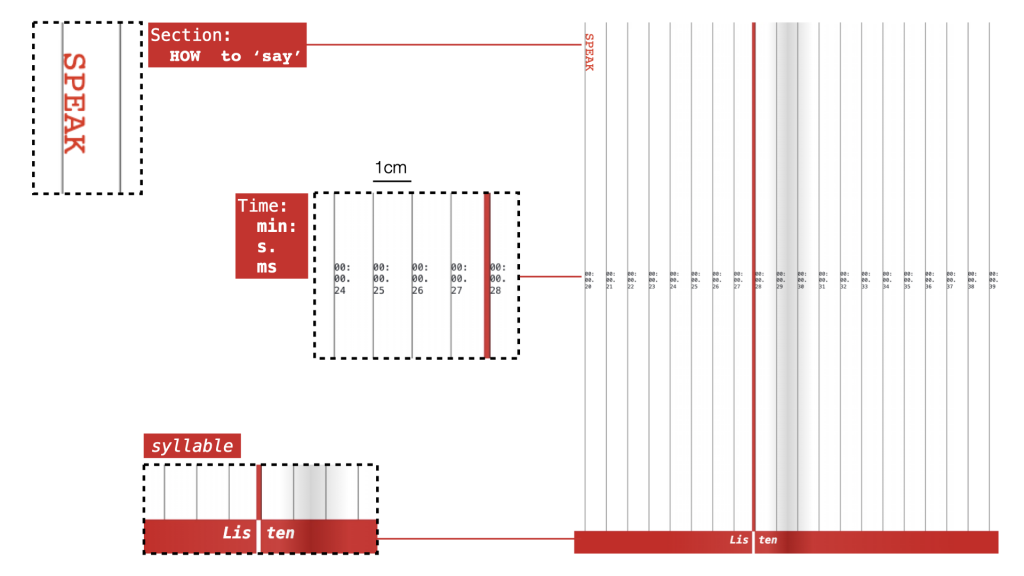
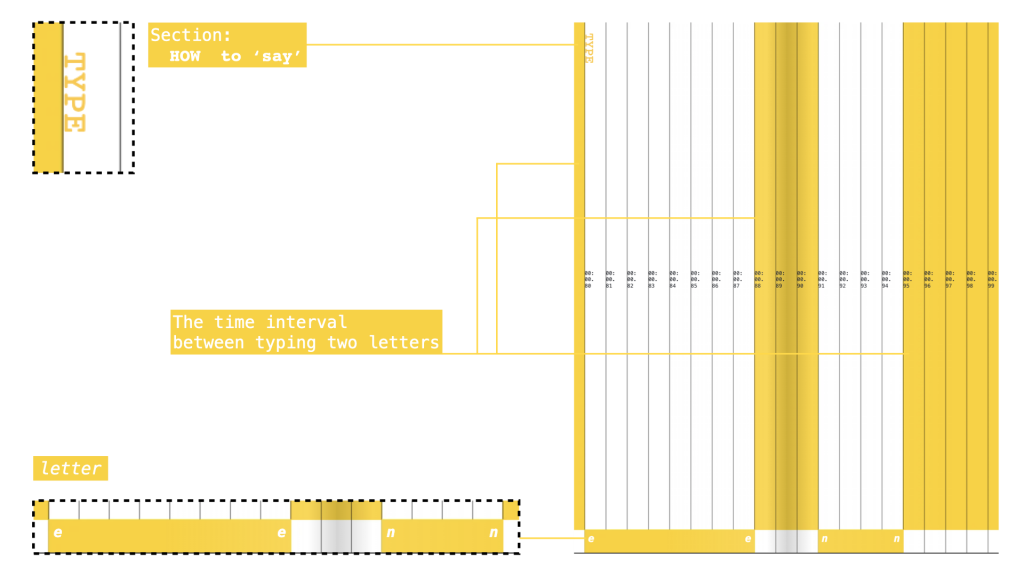
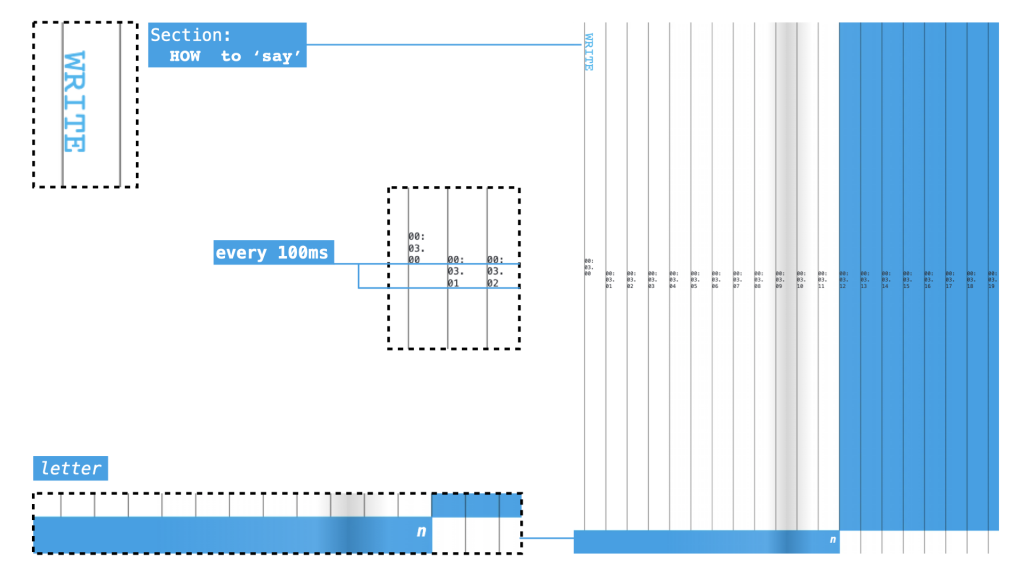
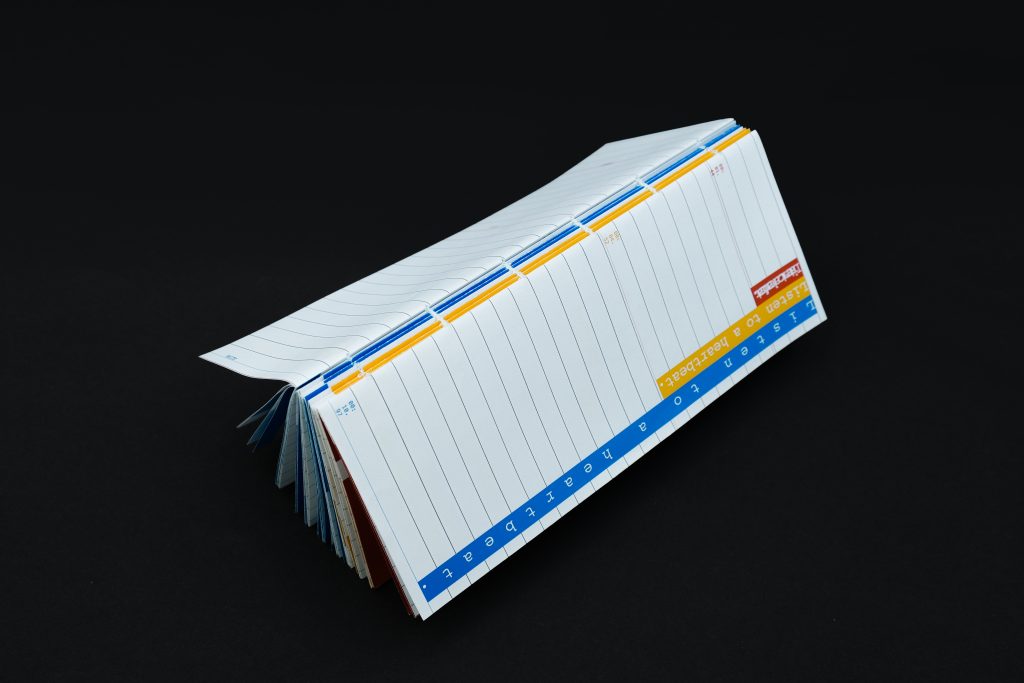
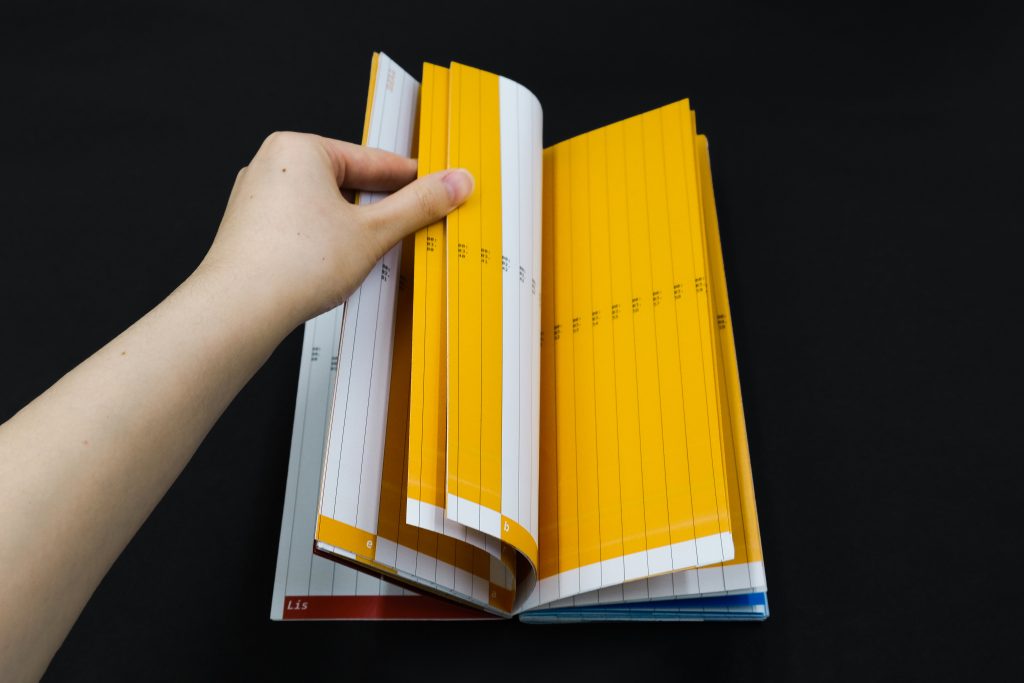
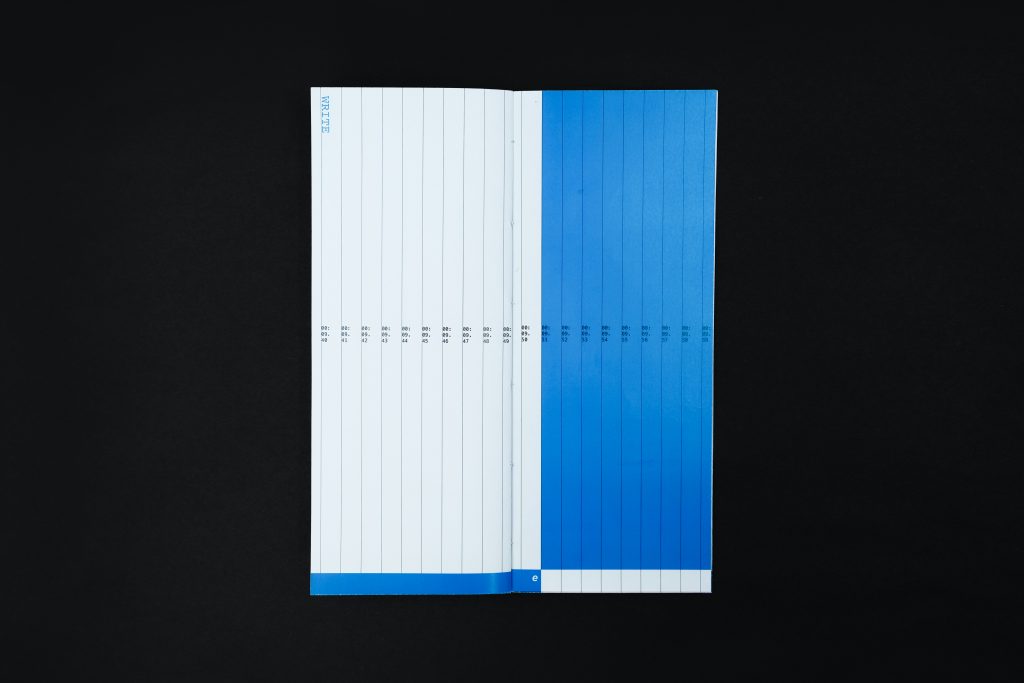
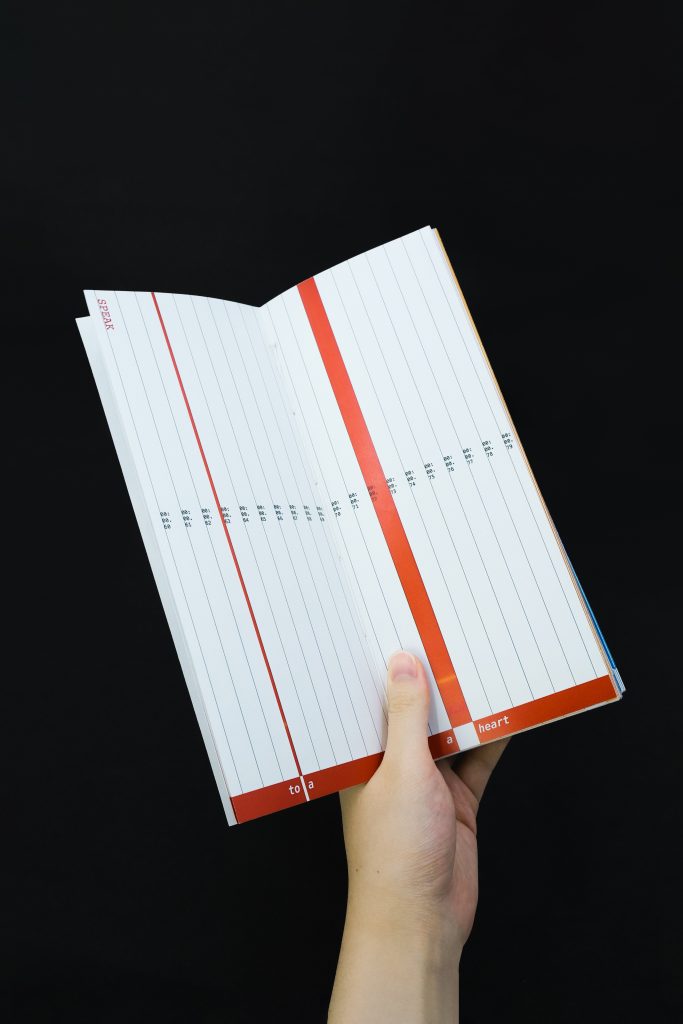
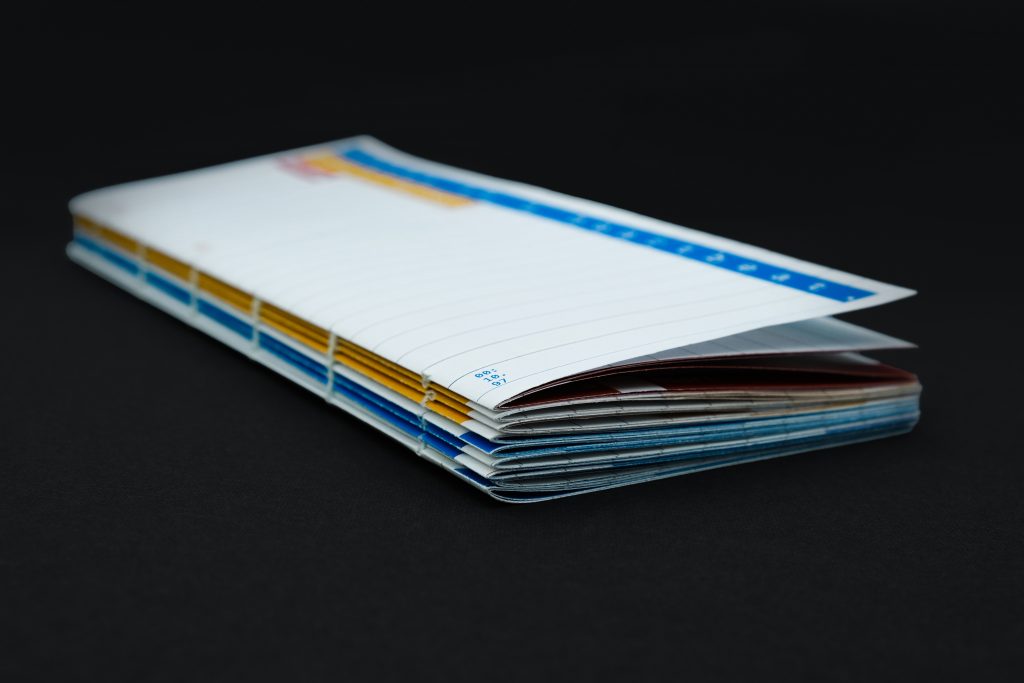
So l retell the same sentence in a way that amplifies its scale. Even under scientific and objective quantification, even the same thing will have different appearances due to different narrative angles.
Reflection
- Try to turn the book into a formal publication, such as adding preface, catalogue and index.
- Exaggerate the qualifications, such as having only one column per page, so that the book will be very narrow and very thick; or printing all the pages on a very long piece of paper. In other words, strengthening the thickness of the book can also highlight the contrast I want to create.
- ’Say’ this sentence more intentionally. For example, I can speak in different languages, type on different devices such as keyboards and typewriters, and write in various ways such as calligraphy.
More…
Leave a Reply